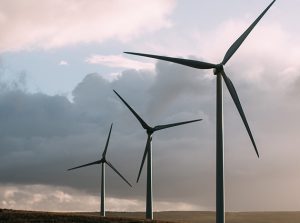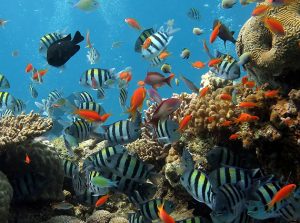Earth Day is here and we’re celebrating by investigating how the 3D printing and additive manufacturing industries are working to help combat climate change.
A significant contributor to climate change is the sheer abundance of plastics littering our planet. Throughout its life, plastic emits greenhouse gases, which contribute to global warming, while microplastics harbor toxic chemicals that infiltrate our drinking water and environments. A key way to combat the amount of plastics we use is to develop alternative, biodegradable materials that don’t take hundreds of years to decompose, while causing harm to our atmosphere along with planetary changes. One alternative that has been recently engineered is Fungal-like Additive Material (FLAM). The material is made from chitin and cellulose, two of the most ubiquitous natural molecules on Earth, giving it global appeal. The material can be 3D printed or cast, responds well to traditional finishing techniques (sanding, drilling, etc.), and additionally, doesn’t require an industrial composting facility to decompose, unlike similar materials that have been engineered. Additionally, the material is lightweight and inexpensive, making it an ideal candidate for replacing plastics in additive manufacturing.
Design for Additive Manufacturing (DFAM) is also a continuously developing method available within additive manufacturing that can help to reduce the carbon footprint of plastics manufacturers. DFAM utilizes topology optimization and generative design to reduce the amount of plastic utilized for a particular product; this not only reduces the amount of plastic being introduced to the environment, but also serves to lightweight the part while maintaining strength (reducing carbon cost via any required transportation) and create a product that is optimized to perform a certain task (reducing waste). This design technique can create geometries that are simply not available with traditional or subtractive manufacturing techniques. Design for Additive Manufacturing also allows for the creation of digital warehouses, where parts are printed on demand rather than stockpiled, the latter of which can contribute to adding needless plastic waste to our landfills. These digital warehouses also serve to reduce emissions produced via transportation; when parts can be created anywhere, these emissions can be reduced to null.
Speaking of transportation, additive manufacturing itself can contribute to reducing transportation emissions by creating products that help to create clean energy. Because printing can be performed on-site for green energy producers such as wind turbines, additive manufacturing offers a two-for-one hit for sustainability and environmental protection: there is no need to transport the cement base elements of the turbine over hundreds of miles, and the turbines themselves are creating green sustainable energy, essentially offsetting other processes that don’t have the ability to convert to such green manufacturing standards.
Designing for Additive Manufacturing also serves to imitate nature so as to better protect nature which has been altered a result of climate change. Warmer and more acidic waters worldwide (a result of global warming and emissions) are leading to coral death, which consequently causes further oceanic damage and death due to all the sea life that relies on the coral. The abilities of DFAM to create intricate lattice structures, grooves, and texture has allowed for the creation of artificial reefs to serve this displaced sea life and rebuild our coral reefs. Seawalls are another opportunity to innovate with DFAM; as water levels rise, 3D printing can generate complex curved, lighter, and thinner cement surfaces that disperse wave energy in many directions, thereby reducing land and environmental erosion and encroachment.
ProtoCAM is always working towards implementing new methods to better contribute to a healthier environment and future. We exercise responsible disposal of materials and recycle whenever we can. We use sustainable packing materials and are working towards ISO 14001 certification. We also regularly recycle our plastic materials where possible, including within our Multi Jet Fusion process. Learn more about everything we’re doing to sustain a positive environmental impact in our article on “going green” in the industry.
Want to know what you can do to help out the planet? Visit https://www.earthday.org/ to participate in Earth Day activities and do your part!



